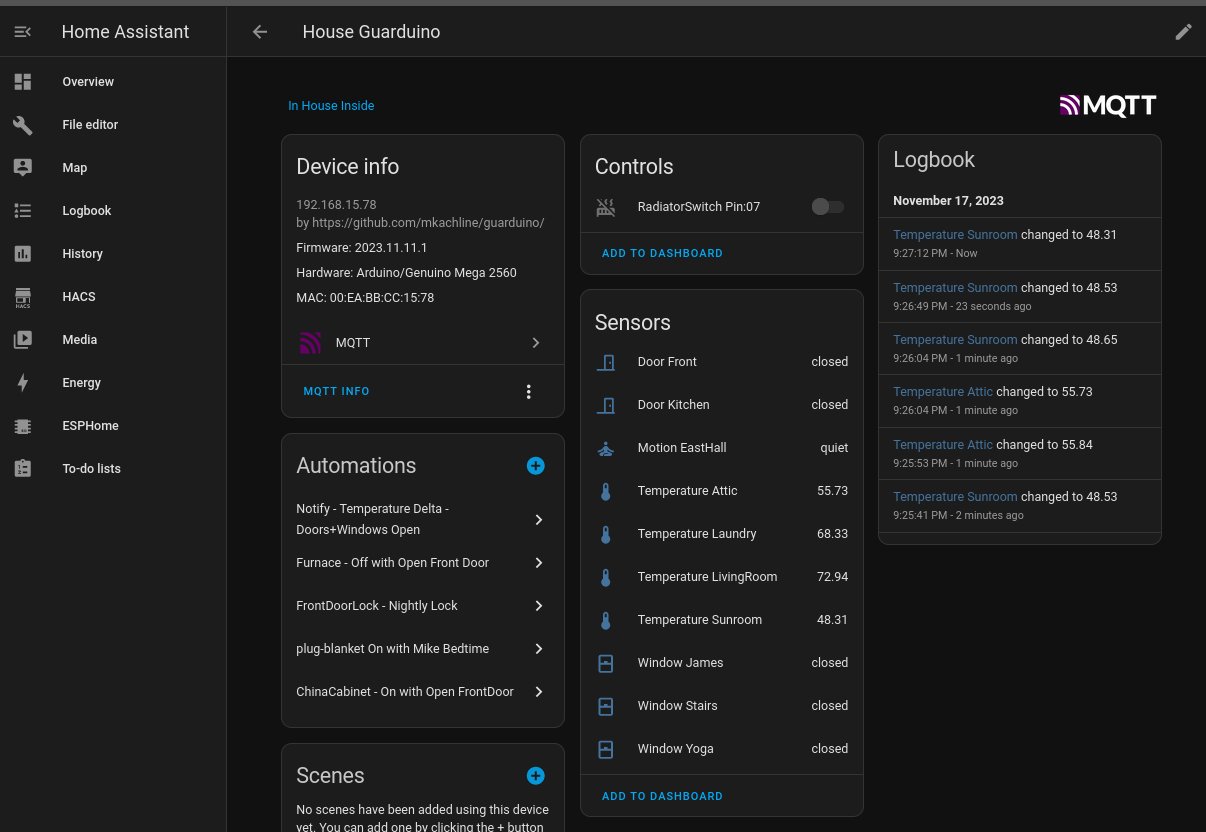Guardino is an Arduino (Mega) Sketch which provides a low-cost, high reliability, "wired" home security hardware interface which reports into HomeAssistant using MQTT autodiscovery.

- Monitors wired reed switches via BOTH "NO" and "NC" pins, thus enabling reliable detection of "Open", "Closed", "Unknown" and "No Power".
- Monitors wired (PIR/microwave) motion detectors via BOTH "data" pin AND "power sense" pins, thus enabling reliable detection of "motion", "quiet", "unknown" and "no power."
- Supports HomeAssistant MQTT "Auto Discovery". NO "configuration.yaml" changes are needed.
- Supports monitoring multiple (20 or more?) concurrent, "two pin" sensors.
- Supports two-way toggle and read of HomeAssistant "Switches" via MQTT.
- Supports reading zero to many wired, DS18x temperature sensors.
- Presents dynamic icons based on sensor type and current sensor state.
- Runs on (affordable) Arduino Mega hardware.
- Install the "Mosquitto Broker" Add-On into your HomeAssistant instance.
- Install the "MQTT" Integration into your HomeAssistant instance.
- Edit guarduino.ino
- Set your Mosquitto IP address (MQTT_ADDRESS) in guarduino.ino
- Set your Mosquitto Password (MQTT_PASSWORD) in guarduino.ino
- Install Arduino dependency libraries listed on top of guarduino.ino
- Compile, then upload into your Arduino Mega.
- Boot your Guarduino (Serial Baud rate 19200)
- HomeAssistant | Settings | Devices & Services | MQTT
- Wait for your Guarduino to show up.
Visit the Guarduino Wiki
Guarduino was born after I was victim of a break-in into my garage where, every hand tool I owned was stolen. Determined to prevent this again, I wanted to monitor entry points into the garage (and house) using devices which I could RELY on, and which did not cost a fortune. I found that most existing projects either supported "one pin" reed switches, and/or, were not capable of supporting numerous devices on an Arduino, typically due to memory constraints.